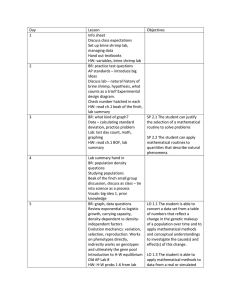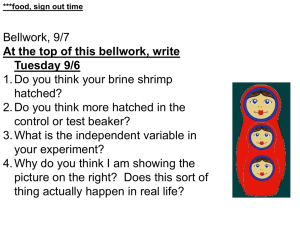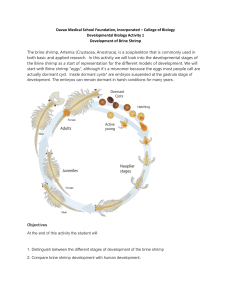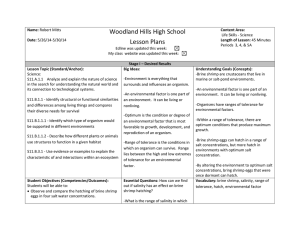Hatching Brine Shrimp Lab Report Directions
advertisement
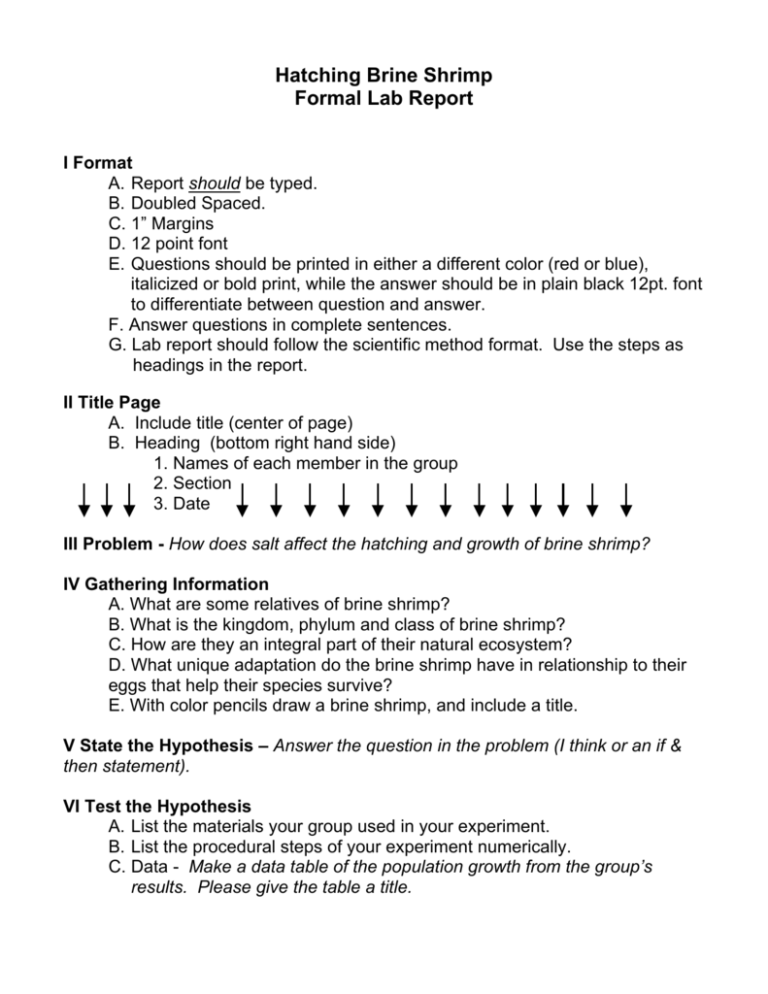
Hatching Brine Shrimp Formal Lab Report I Format A. Report should be typed. B. Doubled Spaced. C. 1” Margins D. 12 point font E. Questions should be printed in either a different color (red or blue), italicized or bold print, while the answer should be in plain black 12pt. font to differentiate between question and answer. F. Answer questions in complete sentences. G. Lab report should follow the scientific method format. Use the steps as headings in the report. II Title Page A. Include title (center of page) B. Heading (bottom right hand side) 1. Names of each member in the group 2. Section 3. Date III Problem - How does salt affect the hatching and growth of brine shrimp? IV Gathering Information A. What are some relatives of brine shrimp? B. What is the kingdom, phylum and class of brine shrimp? C. How are they an integral part of their natural ecosystem? D. What unique adaptation do the brine shrimp have in relationship to their eggs that help their species survive? E. With color pencils draw a brine shrimp, and include a title. V State the Hypothesis – Answer the question in the problem (I think or an if & then statement). VI Test the Hypothesis A. List the materials your group used in your experiment. B. List the procedural steps of your experiment numerically. C. Data - Make a data table of the population growth from the group’s results. Please give the table a title. D. Results – Graphing the data in the data table. 1. Follow the directions given from the handout “Graphing Data in a Microsoft Excel Spreadsheet” to make a line graph. 2. Follow the directions given from the handout “Graphing Data in a Microsoft Excel Spreadsheet” to make a bar graph. 3. Both graphs need a title and key. VII Conclusion A. Which graph illustrates the data more effectively the line or bar graph? Explain. B. Why do we use graphs to analyze data? C. What was your control in this experiment? (Hint: not the eggs.) D. What were your variables? (What were you trying to find out or test? Hint: not the eggs.) E. Identify any environmental or procedural variables (lighting, temperature, method of collecting data etc.) that may have had an impact on your results. Explain how. F. Were there any accidents or other events that happened, that could of or did affect your results? If so, please explain what happened, and how it affected your results. G. Describe the contents of each jar after one week. Do they differ from one another? How? H. Did the results support your hypothesis? Explain why or why not using your data to support your answer. I. Predict the effect that increasing the amount of salt in the water would have on the brine shrimp eggs. J. How does your results compare to those of other groups in class? K. If you were to re-test your hypothesis, would you change anything regarding how you carried out your experiment? (materials, procedural steps, environmental conditions, etc.) If so, explain what you would change and why.



